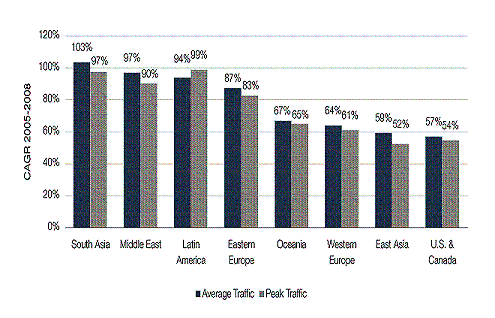The Middle East has witnessed a growth in wireless and broadband subscribers despite the global market showing a decline in 2009, a new research has found.
According to TeleGeography, a telecommunications research, analysis and consulting company, wireless subscribers in the Middle East at the end of Q1 2009 were at 232 million, which is a three per cent growth from Q4 2008 and a 22 per cent growth from Q1 of that year.
Globally, wireless subscriber additions in Q1 2009 declined slightly, as 153 million net new subscribers were added, 10 million fewer than in Q4 2008.
About 49 per cent of Q1 wireless subscriber growth came from India and China; growth slowed in many other markets, with Western and Eastern Europe being particularly slow. Countries such as France, Germany, Italy, Poland, Ukraine and the United Kingdom were all essentially flat or even in slight decline
John Dinsdale from TeleGeography Research, said: “Broadband subscribers at the end of Q1 2009 in the Middle East were at 12 million – a four per cent growth from Q4 2008 and a 25 per cent growth from Q1 2008. Globally, broadband subscriptions during the quarter were at 14 million, in line with Q4 2008 additions. China accounted for 30 per cent of global growth, while the United States was the only other country to add more than one million subscribers in the quarter.”
However, the Middle East did have to catch up in the telecom service provider segment, Dinsdale said. “Of the world’s top 20 telecom service providers, none are headquartered in the Middle East, and Saudi Telecom (STC) was the only one closest to joining the list.”
[Source: Zawya]
